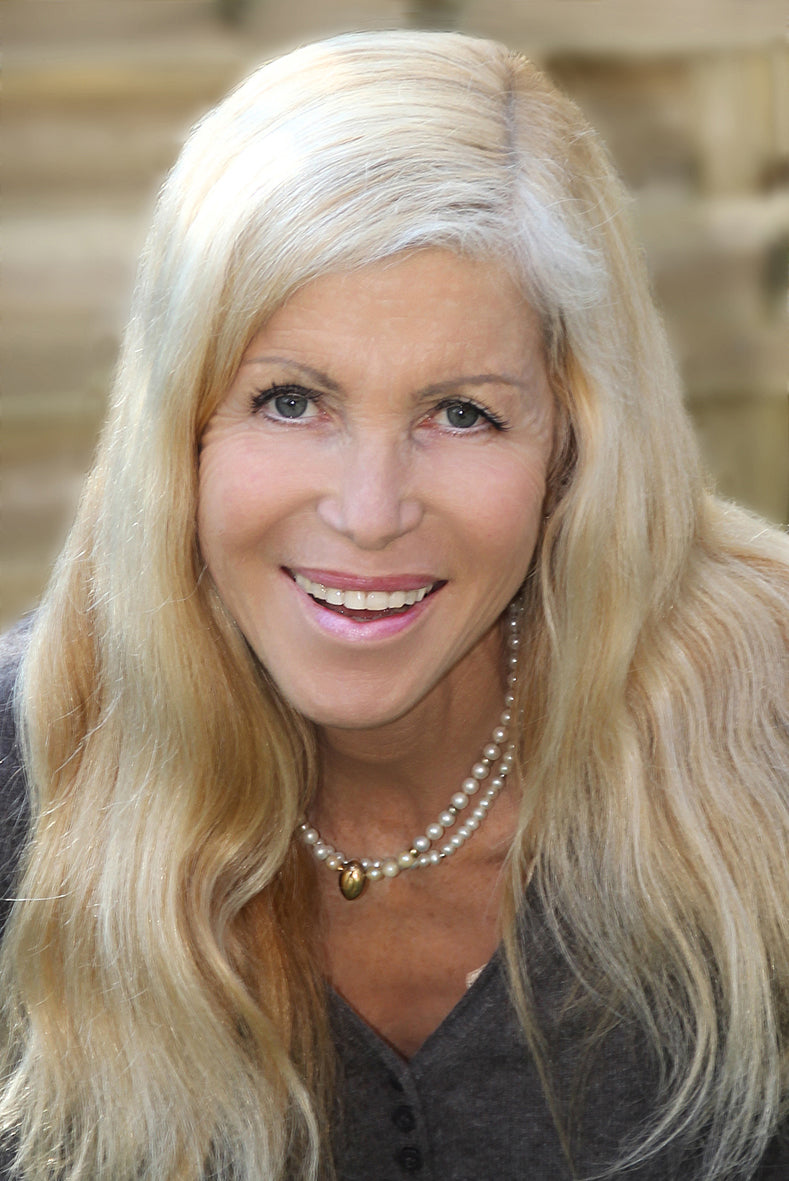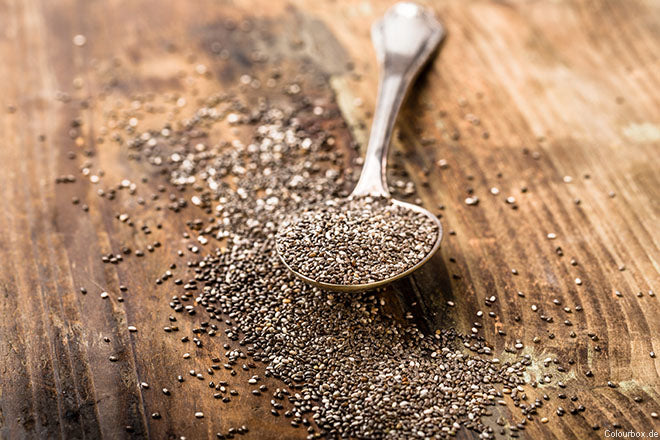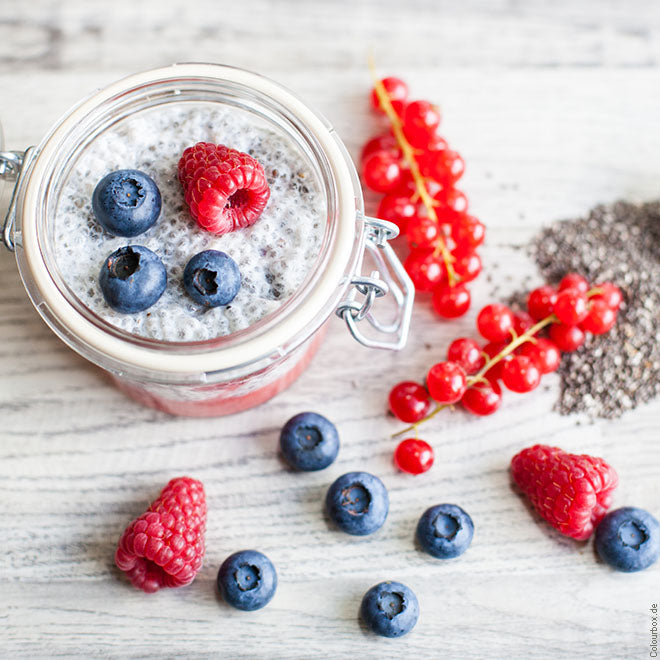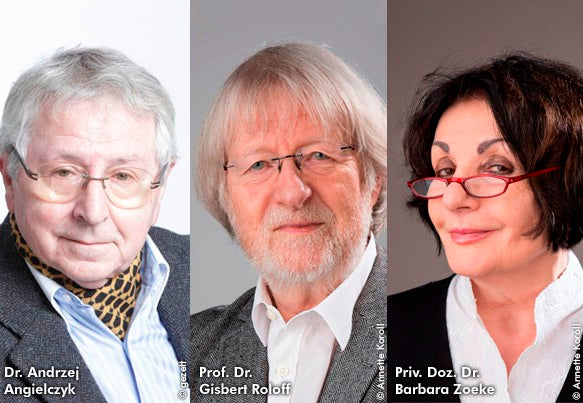
“Chia gives us all the nutrients we need!”
“Chia gives us all the nutrients we need!”
Interview with nutrition expert and Chia pioneer Barbara Simonsohn
Chia, the valuable wonder plant of the Aztecs, has been on everyone's lips for several years. From organic shops and health food stores to many bakeries with chia bread and even the increasingly health-conscious discounters, the small seeds have begun their triumphant advance. Barbara Simonsohn, a well-known author of advice books on holistic health topics, was one of the first to recognize the potential of the plant and to make chia known as a power food in this country too.
Following her standard work “Chia-Power” (Windpferd-Verlag 2014), she recently published the compact guide “ Chia ”, which summarizes the most important information about ingredients, effects and preparation.
Because of its high nutrient density, chia is considered a real “superfood”. Is chia really a superlative plant?
Simonsohn: Yes, it definitely is! Chia contains exactly what we urgently need - omega-3 fatty acids and fiber - and much more. Chia brings us back into balance. The sensational thing about it is that chia is not a nutrient concentrate, but a complete food that has not been cultivated at all because it was almost "forgotten" by the end of the 20th century and was only grown on around 250 hectares. Here are a few examples of what it contains: Chia contains five times as much protein as kidney beans, almost twice as much protein as soybeans, eight times as many omega-3 fatty acids as salmon, twice as many of these valuable fatty acids as algae, 15 times as much fiber as whole grain rice and eight times as many minerals as rice, twice as much potassium as bananas, up to six times as much iron as spinach, up to six times as much calcium as whole milk, 16 times as much magnesium as broccoli, three times as much zinc as beans, seven times as much vitamin C as oranges, three times as much vitamin E as wheat germ and five times as much folic acid as spinach. Given the lack of vital nutrients in our food - we are starving from full pots - anyone who wants to maintain a healthy lifestyle can hardly do without chia.
For several decades, linseed, which comes from one of the world's oldest cultivated plants, has been used as a valuable source of nutrients and digestive aid. What do you see as the differences between chia and linseed?
Simonsohn: In terms of nutrient density and concentration of omega-3 fatty acids, only linseed can keep up with chia. However, chia has four times as much fiber as linseed, which is important for healthy intestinal flora and rapid intestinal transit. A tablespoon of chia seeds, about 12 grams, contains around five grams of fiber. The same amount of fiber can be found in ten slices of brown bread. The average German only consumes 15 grams of fiber, doctors recommend at least 30 grams, and our ancestors consumed 60 grams of that daily. Linseed does not contain any antioxidants compared to chia. With an ORAC value of 7000 - ORAC measures the antioxidant potential, i.e. the ability to neutralize dangerous free radicals - chia has more antioxidants than blueberries.
Therefore, unlike linseed meal and oil, chia cannot go rancid even when ground and does not need to be stored in the fridge and in the dark. Unlike linseed, chia is a vitamin and mineral bomb. It also contains polyphenols such as ellagic acid, catechins and caffeic acid, which protect the body from cancer. Unlike chia, linseed contains some ingredients that are hazardous to health, such as the glycosides limarin, linustatin and neolinustatin, antagonists of vitamin B6 , and inhibitors of trypsin. Glycosides are precursors of hydrogen cyanide. The US Food and Drug Administration (FDA) has therefore not approved linseed as a foodstuff, and it is even banned there as animal feed. Linseed is also banned as a foodstuff in France and its consumption is only permitted to a limited extent in Belgium and Switzerland.
Do you think chia could soon replace flaxseed in breads and other baked goods?
Simonsohn: Definitely. Many consumers don't particularly like the taste of linseed, but they like the "crunchy" feeling of adding seeds when chewing bread and rolls. Chia tastes much sweeter than linseed, is even healthier and does not contain any ingredients that are harmful to health. Chia contains all the substances we urgently need, especially fiber, omega-3 fatty acids, folic acid and antioxidants such as vitamin E. For me, it is only a matter of time before chia replaces linseed and, to some extent, pumpkin seeds and sunflower seeds in baked goods. Eating healthily has never been as delicious as with chia. One in two Germans is overweight. The bakery trade could make a contribution to public health by adding chia to baked goods such as bread, rolls and biscuits.
Chia was initially an insider tip for competitive athletes and marathon runners. Who else can benefit from chia for their health?
Simonsohn: Everyone can benefit from chia. Children and young people are often affected by a nutrient deficiency due to an increased need for vital substances, the consumption of junk food and empty calories and the stress of school. Give your children chia bars or bread enriched with chia to take to school and let them start the day with chia muesli. Diabetics can regulate their blood sugar levels.
Women should choose chia because they find what they urgently need in these seeds: folic acid, iron, calcium, magnesium and omega-3 fatty acids as well as magnesium. Chia also helps with weight management due to its high swelling capacity and the corresponding satiety effect. Active athletes can increase their stamina and performance with chia. People with high blood pressure, which affects more than half of adults, can normalize their blood pressure. Vegetarians and vegans are often malnourished when it comes to calcium, zinc, iron and vitamin B 12. The first three minerals are concentrated in chia. For vitamin B 12 in the active form as cobalamin, I recommend moringa powder.
Are there any restrictions on the use of chia?
Simonsohn: There is no overdose and no side effects from eating chia. Because chia is classified as a "novel food" in the EU, maximum amounts are specified. In my opinion, these are not possible to reach with a normal diet and secondly, they are unnecessary.
Where do you see further potential for Chia?
Simonsohn: Other countries are much further ahead when it comes to marketing chia. In the USA, for example, chia is offered in animal feed to enrich milk, meat and eggs with valuable omega-3 fatty acids. In the USA and other countries, you can buy chia flour, chia from sprouted seeds and sprouted seeds enriched with DHA from algae. In the USA and Canada, you can buy chia seeds, chia oil, chia oil softgel capsules, chia bars, breakfast cereal with chia, cookies and chips. In South America, you can find the same range of products plus pasta. In Australia and New Zealand, you can buy bread enriched with chia, a cookie snack and yogurt with chia. In Japan and Korea, chia is known primarily as a dietary supplement.
The Chia Company's application from May 2011 for the approval of baked goods such as muffins, cookies, crackers, biscuits, breakfast cereals and dried fruit, nut and seed mixes containing chia has now been approved by the relevant EU authority. Approval of chia oil is expected by the end of 2016. Chia has enormous potential because the seeds taste delicious, have a long shelf life and can be used universally, including for pets and farm animals.
Book tip:
Barbara Simonsohn: Chia. Compact guide. Fit and slim with the power food of the Aztecs. With delicious recipes. Mankau Verlag, 1st edition May 2016, paperback, full color, 95 pages, 7.99 euros (D) / 8.20 euros (A), ISBN 978-3-86374-296-6.
Link recommendations:
More information about "Chia. Compact Guide"
To the reading sample in PDF format
More about the author Barbara Simonsohn
To the Internet forum of Mankau Verlag











